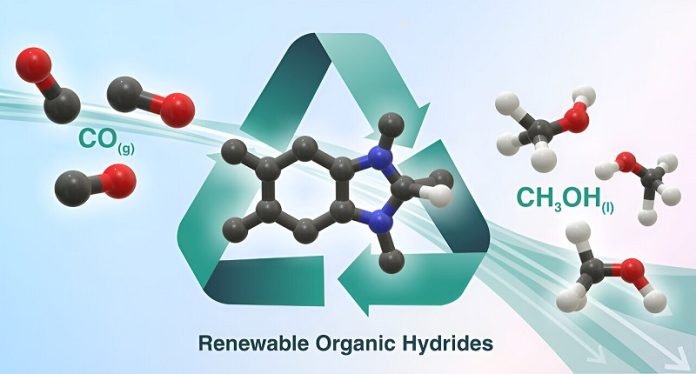
Researchers from the U.S. Department of Energy’s Brookhaven National Laboratory and the University of North Carolina Chapel Hill have made an exciting breakthrough in the quest for sustainable energy.
They’ve found a way to turn carbon dioxide (CO2), a major contributor to climate change, into methanol, a useful liquid fuel.
Using sunlight as their power source, the scientists have developed a two-step process that happens at room temperature and normal air pressure. They’ve employed a special organic reagent, similar to a catalyst found in plants’ photosynthesis process, to make this conversion happen.
Why is this important? Well, CO2 is a big problem because it traps heat in the Earth’s atmosphere, leading to global warming. By converting it into methanol, we can turn a harmful gas into a useful fuel that can be easily stored and transported.
Methanol is not only a good fuel but also a building block for making other useful chemicals. Plus, it’s made of just one carbon atom, like CO2, so it’s a neat way to recycle carbon without adding more to the air.
The scientists didn’t try to do this conversion all at once, which would be like climbing a huge mountain. Instead, they broke it down into smaller steps, like climbing several smaller mountains with valleys in between.
To help with these steps, they used organic molecules called catalysts, which make the reactions easier and more efficient. These catalysts are similar to the ones found in plants during photosynthesis, where sunlight is used to turn CO2 into sugars.
The first step of their process turns CO2 into carbon monoxide (CO) using sunlight. Then, in the second step, they use the catalysts to turn the CO into methanol.
The cool thing is that the final step, where methanol is released, is triggered by light hitting the catalyst. This means sunlight not only powers the first step but also helps to produce the final product.
This research is a big step forward in the journey towards making renewable liquid fuels from CO2.
It’s a promising way to tackle climate change while also providing a clean and sustainable energy source for the future.



